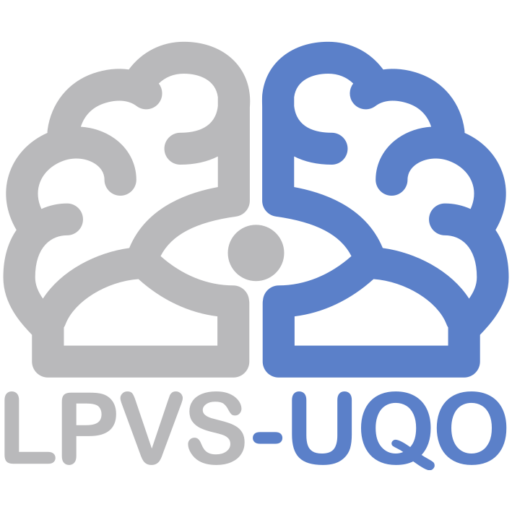The research assistants’ room
This shared workroom is available to LPVS students to study for their courses, advance their research, analyze data, help each other and more. Its versatility allows research assistants to work seated or even standing, accommodating as many students as possible.
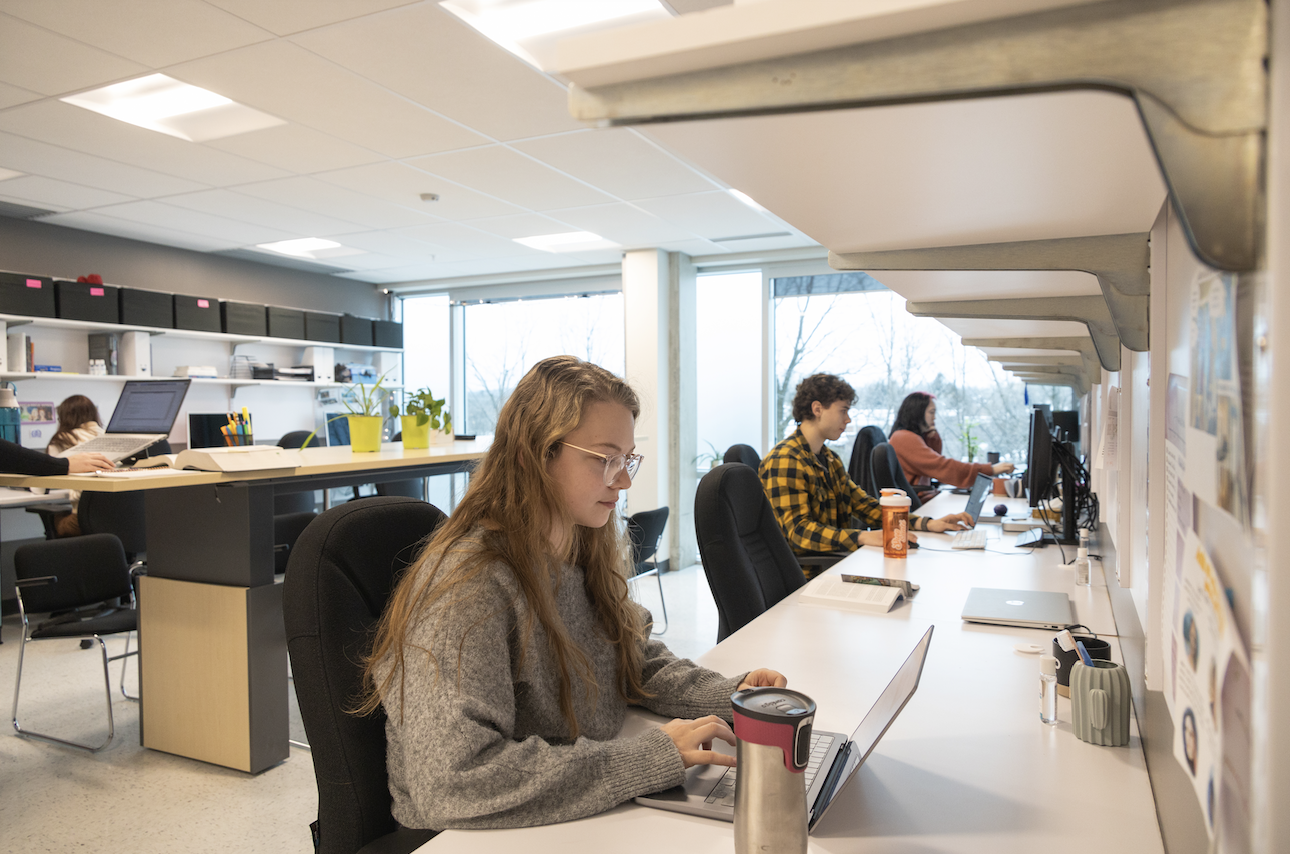
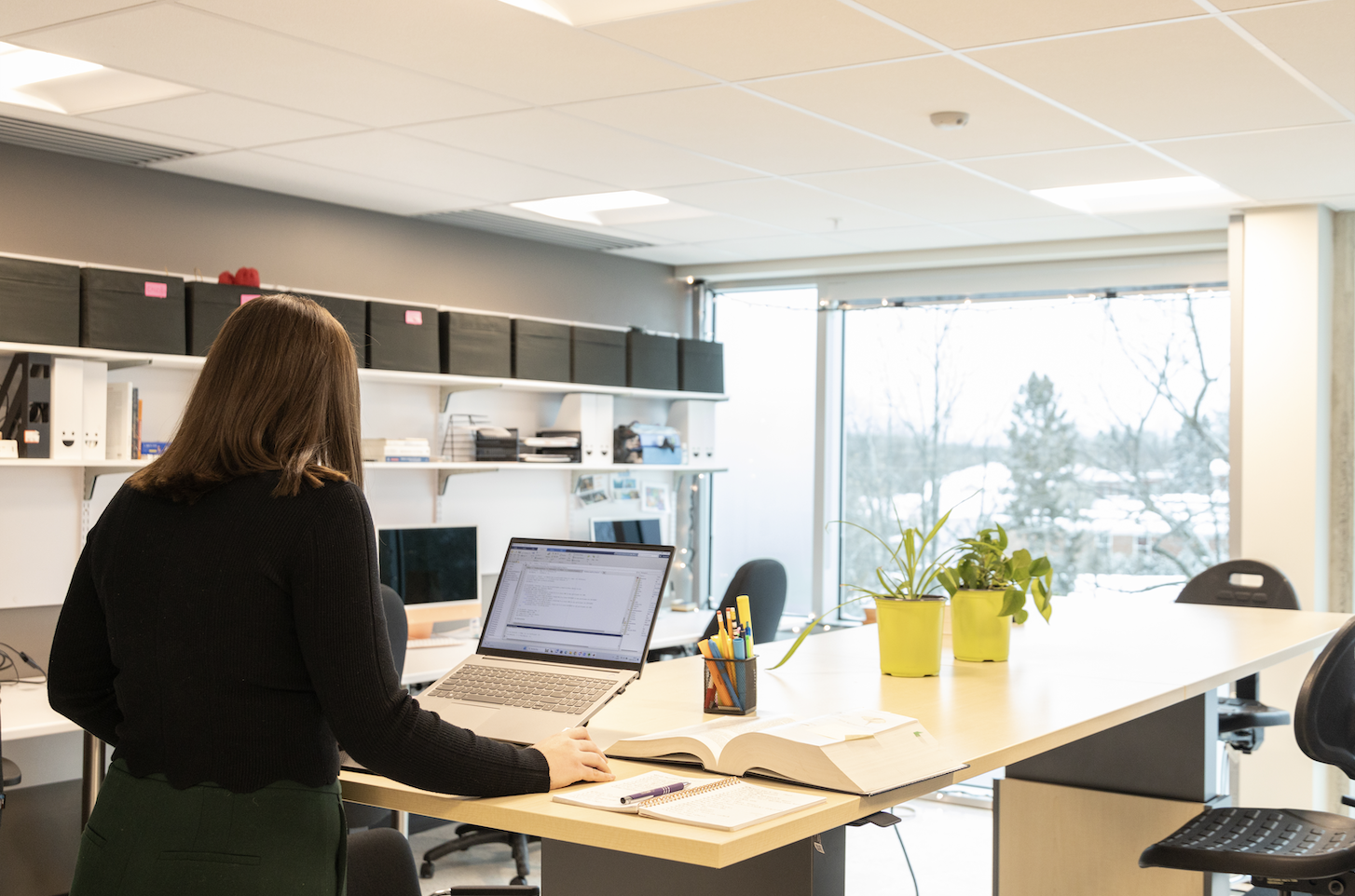
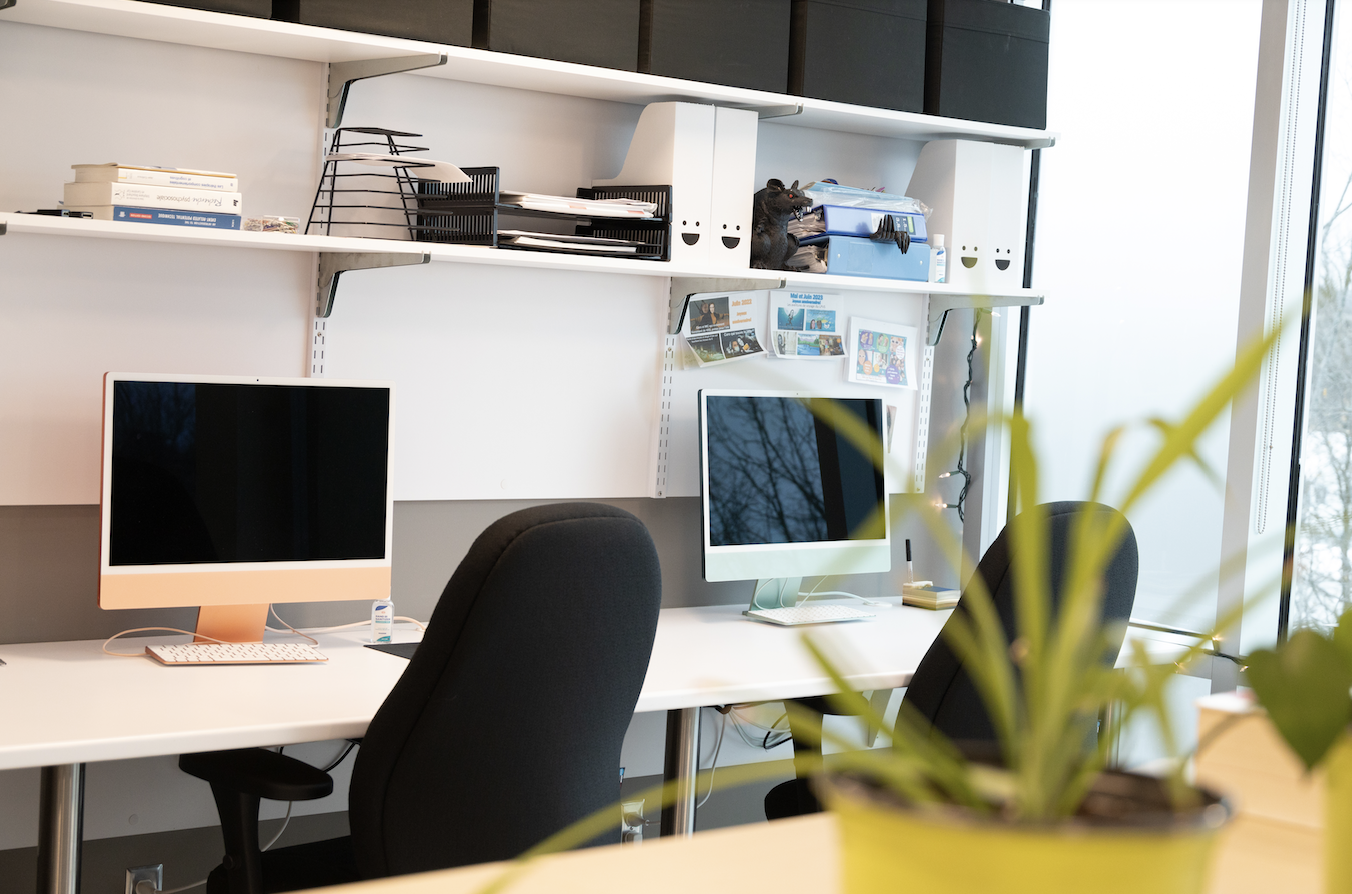


The VPixx room
This room is equipped with a Trackpixx, a binocular eye-tracking device with high temporal resolution (2000 Hz), which enables us both to learn about the effects of our experiments in terms of gaze orientation, and to adapt to them. The Trackpixx enables us to take thousands of measurements every second in terms of pupil size, fixation duration and eye movement orientation.
In addition, this room contains a ProPixx projector which is used to present stimuli while ensuring that the visual properties of the image (spatial frequencies, contrast, color) are manipulated precisely and synchronously across the projection screen. Also, since Propixx enables stimuli to be projected onto a very large screen (up to 3 meters diagonal), it makes it possible to study cortical magnification and acuity loss by presenting stimuli in periphery.
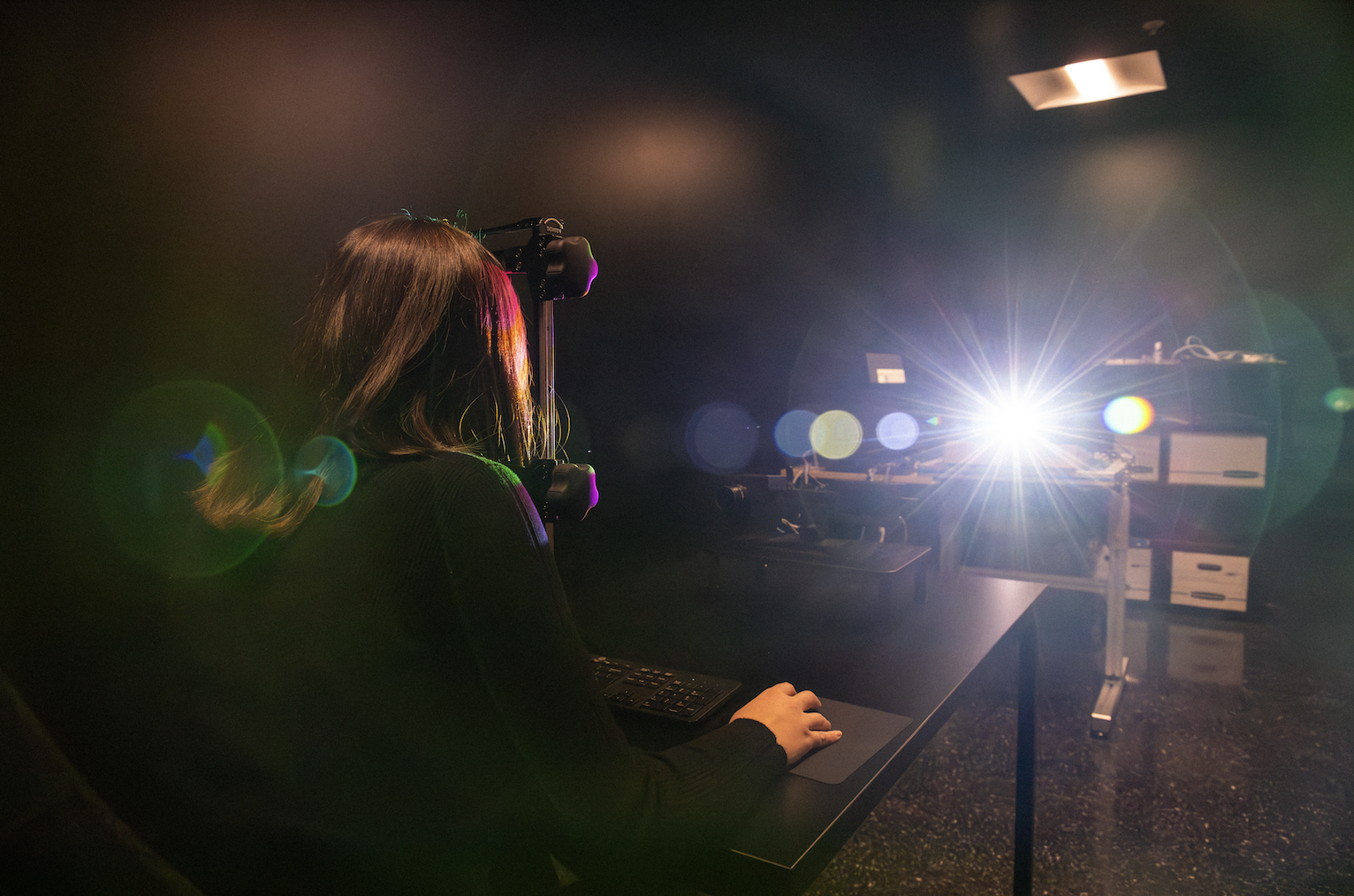

The cognitive electrophysiology room
This room contains an electroencephalography (EEG) system enabling LPVS students to characterize the cerebral processes involved in processing visual information, particularly faces. Our 64-electrodes system from g.tech provides excellent topography, enabling us to pinpoint the components of interest.
The room also contains an industrial-style sink with a telephone shower, so that participants can remove the gel from their scalps as anonymously as possible. This addition also enables research assistants to maximize the life of electrodes by cleaning them quickly after an encounter.
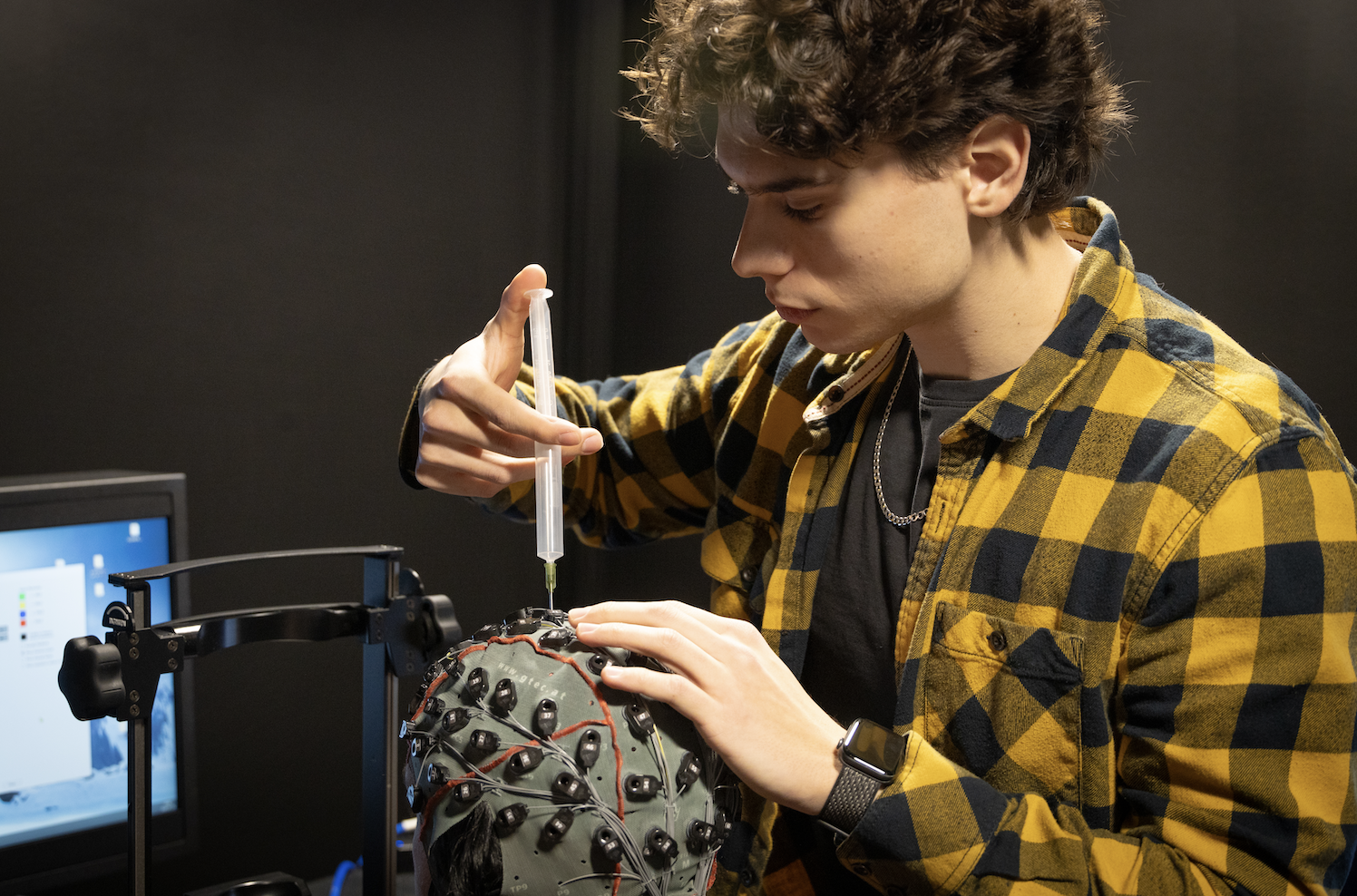
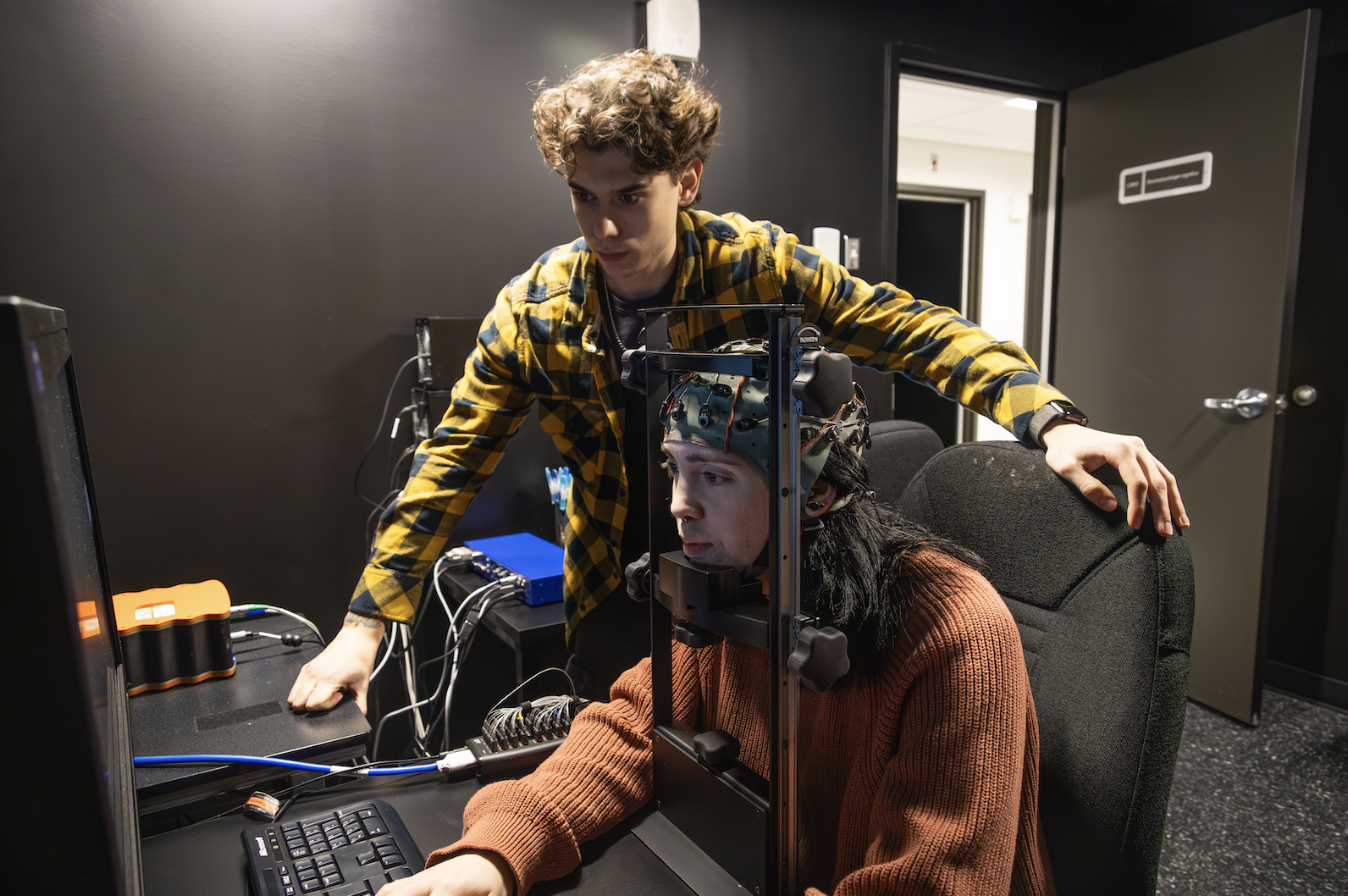
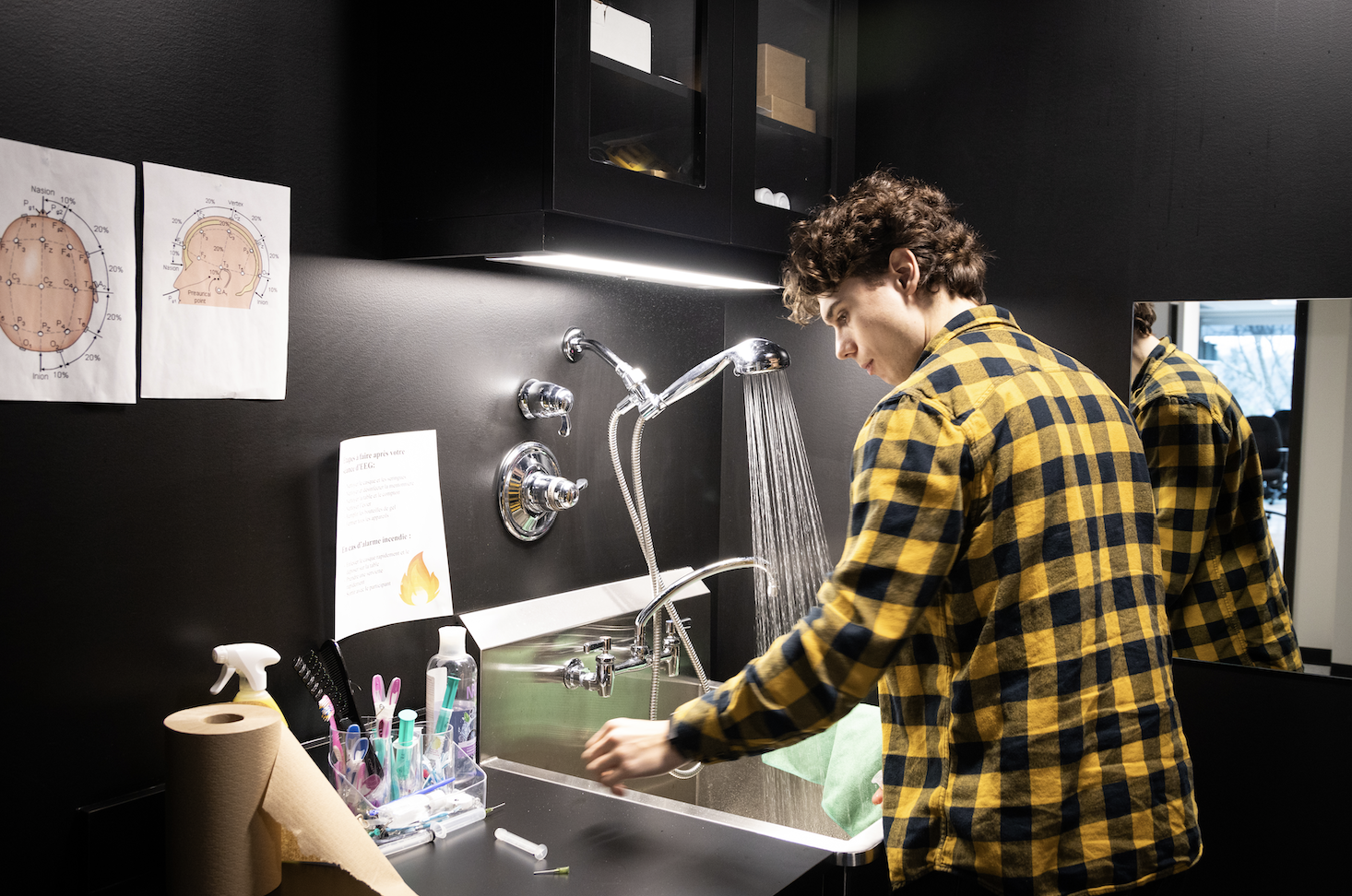
Behavioral rooms
These five rooms contain computers for behavioral experiments in which the desired results are related, for example, to reaction times and error rates. All laboratory tasks are programmed using Matlab software. It’s also worth noting that all the lab’s rooms are painted black, a considerable addition for studies in visual perception.

Of those five rooms mentioned, two are versatile, enabling testing with children, for example. The tables are secured to the wall by double latches, minimizing the risk of accidents.

